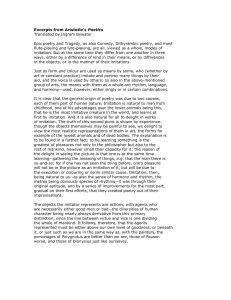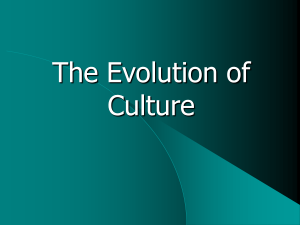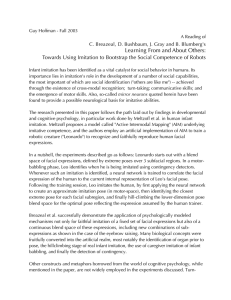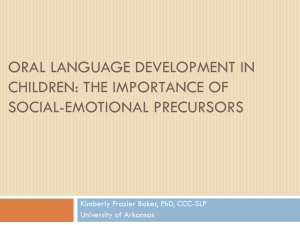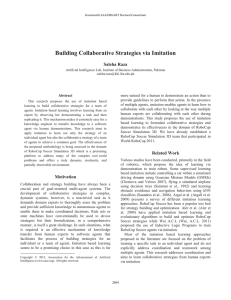What Imitation Tells Us About Social Cognition
advertisement
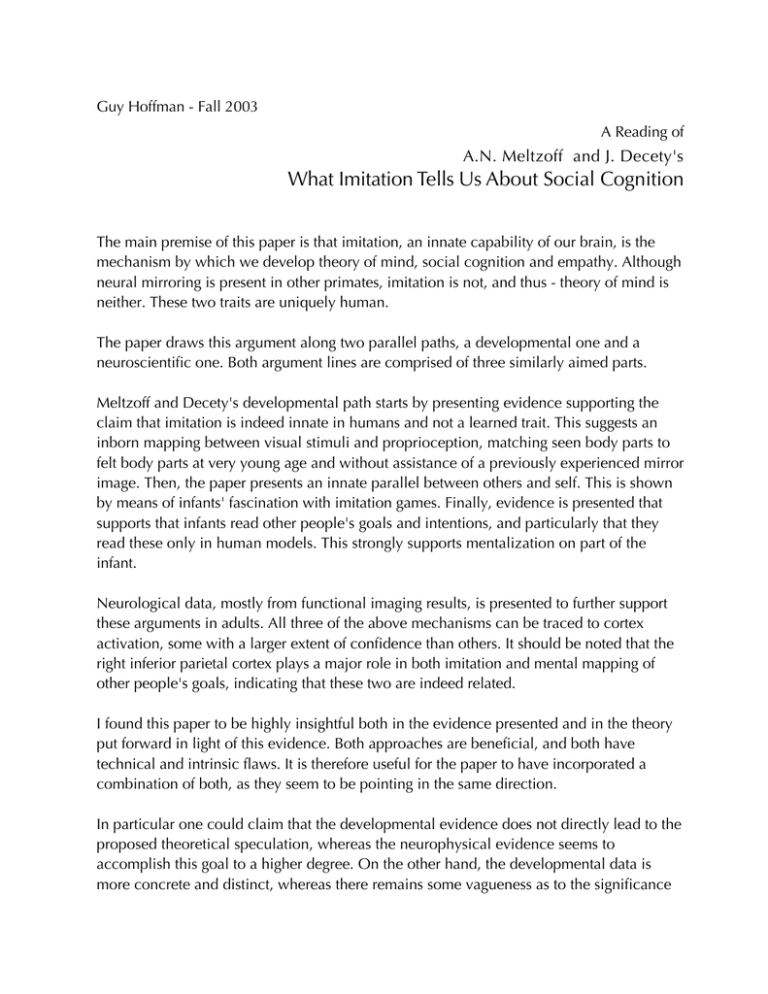
Guy Hoffman - Fall 2003 A Reading of A.N. Meltzoff and J. Decety's What Imitation Tells Us About Social Cognition The main premise of this paper is that imitation, an innate capability of our brain, is the mechanism by which we develop theory of mind, social cognition and empathy. Although neural mirroring is present in other primates, imitation is not, and thus - theory of mind is neither. These two traits are uniquely human. The paper draws this argument along two parallel paths, a developmental one and a neuroscientific one. Both argument lines are comprised of three similarly aimed parts. Meltzoff and Decety's developmental path starts by presenting evidence supporting the claim that imitation is indeed innate in humans and not a learned trait. This suggests an inborn mapping between visual stimuli and proprioception, matching seen body parts to felt body parts at very young age and without assistance of a previously experienced mirror image. Then, the paper presents an innate parallel between others and self. This is shown by means of infants' fascination with imitation games. Finally, evidence is presented that supports that infants read other people's goals and intentions, and particularly that they read these only in human models. This strongly supports mentalization on part of the infant. Neurological data, mostly from functional imaging results, is presented to further support these arguments in adults. All three of the above mechanisms can be traced to cortex activation, some with a larger extent of confidence than others. It should be noted that the right inferior parietal cortex plays a major role in both imitation and mental mapping of other people's goals, indicating that these two are indeed related. I found this paper to be highly insightful both in the evidence presented and in the theory put forward in light of this evidence. Both approaches are beneficial, and both have technical and intrinsic flaws. It is therefore useful for the paper to have incorporated a combination of both, as they seem to be pointing in the same direction. In particular one could claim that the developmental evidence does not directly lead to the proposed theoretical speculation, whereas the neurophysical evidence seems to accomplish this goal to a higher degree. On the other hand, the developmental data is more concrete and distinct, whereas there remains some vagueness as to the significance of the neurological data. Also, one still stays somewhat uneasy about the induction between the different conclusions from the data to the claim that this imitation mechanism is indeed what drives our mentalization process. These doubts are answered in the final part, where the missing link is filled in, namely leaning to associate one's own mental experiences with one's own motor actions. Presumably this - coupled with imitation - leads to our understanding of other people's minds - social cognition. Unfortunately, this missing link is not further supported by evidence, and we are left to take this leap of faith with the authors. From the standpoint of collaborative machines, my main conclusion would be to use imitation in machines to fortify a sense of "other" in the human collaborator. Yet we must keep in mind that this paper strongly suggests that humans do not relate these mental states to non-human counterparts, only to biological beings. A possible conclusion would be stressing the important of anthropomorphism in building agents. I personally doubt this conclusion as - at least anecdotal - evidence often suggests that we do attribute mental states and goals to non-human and non-anthropomorphic objects.
